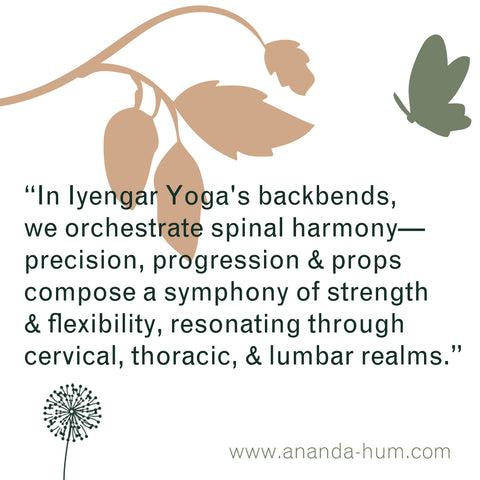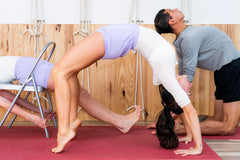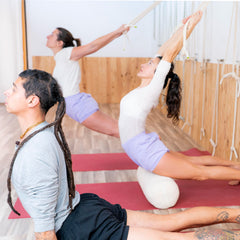In the world of yoga, backbends have long been both admired and criticized for their perceived difficulty and potential risks. However, Iyengar Yoga, a style founded by B.K.S. Iyengar, takes a unique approach to backbends, emphasizing a methodical and progressive practice that addresses the entire length of the spinal column. In this article, we'll explore how Iyengar Yoga opens and stretches each part of the back, dispelling myths about backbends, and highlighting the numerous benefits for spinal health.
Understanding Backbends in Iyengar Yoga
Backbends in Iyengar Yoga are not just about bending the spine backward; they are a holistic practice that involves opening and stretching every part of the spinal column. The spine is divided into three main regions – cervical (neck), thoracic (mid-back), and lumbar (lower back) – and each requires specific attention for a well-rounded and flexible back.

1. Cervical Region:
- Postures like Setu Bandhasana (Bridge Pose) and Matsyasana (Fish Pose) target the neck, promoting strength, flexibility, and relaxation.
- Shoulder-opening poses like Urdhva Mukha Svanasana (Upward-Facing Dog) prepare the neck for deeper backbends.
2. Thoracic Region:
- Viparita Dandasana, a classic Iyengar pose, specifically targets the dorsal region, creating space and flexibility in the mid-back.
- The use of props such as ropes helps open the chest and encourage expansion in the thoracic spine.
3. Lumbar Region:
-
Iyengar Yoga uses props like belts and blocks to support and gradually open the lower back, preventing strain and injury.

- Asanas like Ustrasana (Camel Pose) and Dhanurasana (Bow Pose) are incorporated to target the lumbar spine while maintaining proper alignment.
The Iyengar Method: Gently, Efficiently, Methodically, and Progressively
Iyengar Yoga stands out for its emphasis on precision, alignment, and the use of props to support practitioners in achieving optimal postures. Backbends are no exception, and the methodical progression in Iyengar practice allows for gradual development of flexibility and strength.
1. Shoulder Opening:
- Poses like Adho Mukha Svanasana (Downward-Facing Dog) and Gomukhasana (Cow Face Pose) are incorporated to open and strengthen the shoulders, preparing them for the demands of backbends.

2. Neck Strength and Relaxation:
- Incorporating neck-specific exercises and poses like Salamba Sarvangasana (Supported Shoulderstand) helps build strength while promoting relaxation in the cervical region.
3. Lower Back with Ropes:
- The use of ropes in Iyengar Yoga allows practitioners to target the lower back safely, gradually increasing flexibility without straining the lumbar spine.
4. Viparita Dandasana for the Dorsal Region:
-
Viparita Dandasana, a supported backbend with a chair, is a key pose in Iyengar Yoga, offering a unique stretch to the dorsal region and promoting healthy spinal extension.

Balancing Flexibility and Strength
Iyengar Yoga recognizes the importance of not only cultivating flexibility but also building strength to support the spine. Backbends in this tradition aim to strike a balance, ensuring that the spine remains both flexible and stable.
Visit our yoga accessories online shop to get yoga ropes, yoga chairs, yoga bolsters and more....




